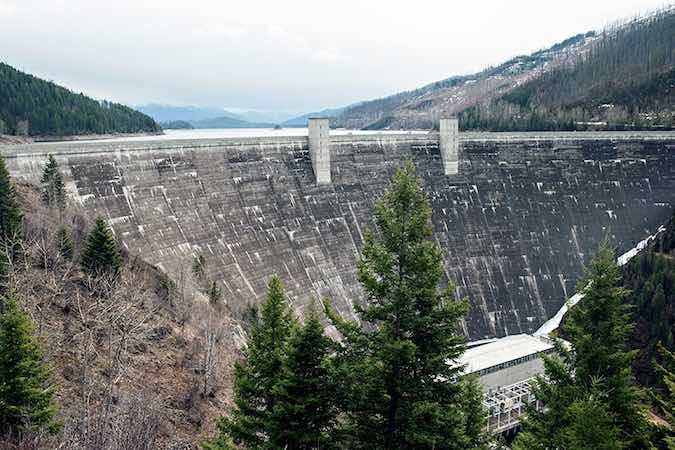forum
library
tutorial
contact

Columbia, Snake Dams
Topic of Public Meetings
by Staff
Spokesman-Review, November 13, 2016
|
the film forum library tutorial contact |

|
Columbia, Snake Dams
by Staff
|
 FISHERIES -- Court-ordered federal public meetings are coming to the region next week, partly to explore the potential for eliminating four lower Snake River dams to boost survival of endangered salmon and steelhead fisheries.
FISHERIES -- Court-ordered federal public meetings are coming to the region next week, partly to explore the potential for eliminating four lower Snake River dams to boost survival of endangered salmon and steelhead fisheries.
Conservationists and others have renewed a push to remove four giant dams from the Snake River to save wild salmon runs after a federal judge criticized the government for failing to consider whether breaching the dams would save the fish.
Dam supporters also are promoting their stand that the dams are valuable for reliable power production, shipping agricultural crops and irrigation while still allowing fish passage.
In May, the judge rejected the government's fifth and latest plan for protecting threatened and endangered salmon in the Columbia system.
Agencies must take a new look at all approaches to managing the southeast Washington dams, including breaching, said U.S. District Court Judge Michael Simon in Portland.
"This is an action that (government agencies) have done their utmost to avoid considering for decades," he wrote.
His order triggered 15 public open-house meetings in Washington, Idaho, Montana and Oregon, where the dam removal issue has percolated for two decades.
The first meeting was held last month, and the final one is scheduled for Dec. 8. After that, a plan to save the salmon must be created.
Meetings in this region next week are scheduled from 4 p.m.-7 p.m. at:
Sockeye recovery plan completed in 2015Last year, NOAA Fisheries completed a recovery plan for sockeye salmon, which used to return in great numbers to Redfish Lake and other lakes north of Ketchum. NOAA's Interior Columbia Technical Recovery Team proposed biological viability criteria that must be met before Snake River sockeye salmon can be delisted from "endangered" status. NOAA reports that a minimum of 1,000 wild spawners must be achieved in both Redfish Lake and Alturas Lake. The minimum spawning abundance threshold for Pettit, Stanley or Yellowbelly lakes is 500 wild spawners. This year, a total of 574 sockeye salmon returned from the ocean to the Sawtooth Valley. Of those, 329 continued into Redfish Lake to spawn, while Idaho Fish and Game brought the other 245 into their hatchery program to spawn in captivity and produce more captive-raised fish. In addition to those fish returning from the ocean, Idaho Fish and Game released 786 captive-reared fish into Redfish Lake to spawn, and another 100 fish into Pettit Lake to spawn there. "The benchmark of 1,000 returning fish cited in the recovery plan refers to fish returning from the ocean, so the captive-reared fish do not count toward that total," said NOAA Fisheries spokesman Michael Millstein.
Idaho Mountain Express, by Tony Evans November 2, 2016
learn more on topics covered in the film
see the video
read the script
learn the songs
discussion forum
